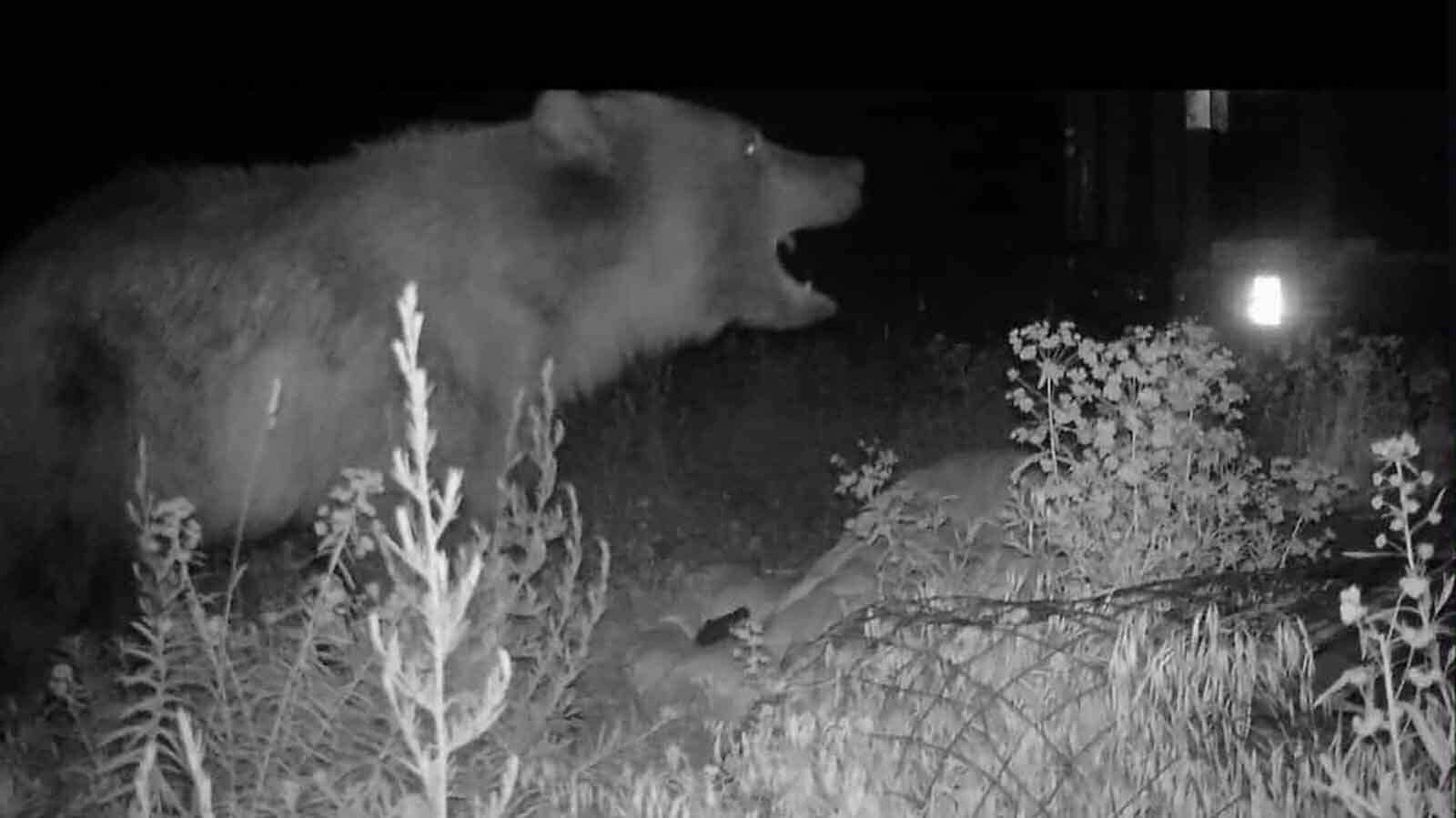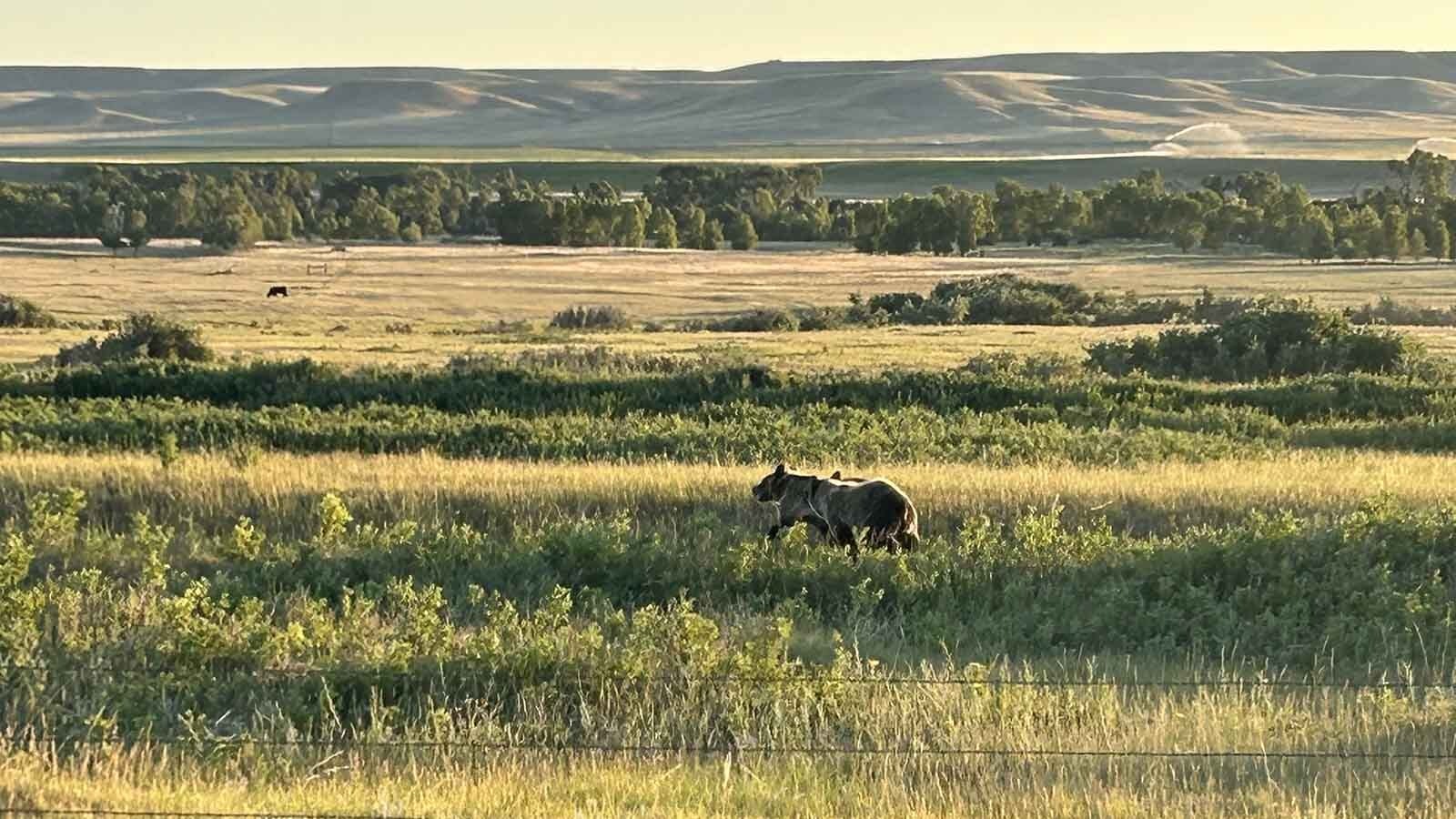In north-central Montana communities where the mountains give way to vast prairies, residents are adjusting to life with ever-increasing numbers of grizzly bears pushing ever farther out into the flatlands.
Jordi Bradford, who lives roughly 3 miles north of Belt in Cascade County, told Cowboy State Daily that she never used to give much thought to grizzlies.
There weren’t any in the area, or so she thought.
Then in June, a grizzly showed up on the Ever Westward farm where she lives with her husband and their toddler.
The bear, thought to be a large boar (male), busted into one of their chicken coops and killed a pig.
That means the family lives in grizzly country now, as far as she’s concerned.
“It’s something we were not prepared for, but we’re learning to be prepared for it,” Bradford said.
David Smock lives in Augusta, a tiny burg in Lewis and Clark County, Montana, 57 miles west of Great Falls.
He said grizzlies started showing up there about a decade ago and have become a common sight. Last week, he took photos of a couple of younger-looking grizzlies in a cattle pasture in broad daylight.
Even the cows around Augusta have gotten used to grizzlies.
“The cows didn’t seem to notice,” Smock said. “They just stood there chewing their cuds.”
He’s an avid bowhunter and told Cowboy State Daily that he has long since gotten used to being “bear aware” while pursuing elk along the face of the Rocky Mountains, about 5 miles away.
The same degree of caution is increasingly required out on the flatlands.
“I’ve seen grizzlies as far out as the Sun River, which is about 20 miles out from the face of the mountains,” he said.
“I’ll check before I let the kids go out and play in the yard,” Smock added.

‘He Had Crushed The Pig’s Skull’
Bradford said that reports of grizzly sightings have been tricking in from nearby ranches. The bears apparently like hanging out in the nearby Highwood Mountains, an island range surrounded by prairie.
When one of her family’s pigs was killed during the night last month, they assumed a mountain lion had done it.
“He had crushed the pig’s skull. At first, we thought it was a lion, because we have lots of mountain lions in the area,” she said. “But we put up a game camera and left the pig carcass out. And sure enough, he came back, and it was a grizzly.”
The grizzly also ripped open one of their “meat bird” chicken coops, but oddly enough didn’t kill any of the chickens, she said.
Apparently, the bear was happy to gorge itself on the grain meant to feed the chickens, Bradford said.
Grizzlies Gobble Fawns
The grizzly population around Augusta is well-established, Smock said.
“It’s not just out on the prairie, it’s all over the place,” he said.
When he goes elk hunting in the mountains, he takes all the usual precautions, such as watching for bears approaching from downwind after he kills and elk and is quartering out the carcass.
As bowhunters frequently do, he likes to hunker down in cover and use an elk call, trying to entice bulls into bowshot range.
A few times, grizzlies have come to within a few yards of him, apparently thinking that he was an elk.
Most of them spook easily once he makes his presence known, Smock said.
A few hunting seasons ago, one grizzly didn’t scare easily.
“He was swatting the ground and making some strange noises,” but eventually left without charging, Smock said.
He said he wonders if that was one of the “aggressive bears” that the Montana Department of Fish, Wildlife and Parks (FWP) occasionally tries to relocate.
The grizzlies have established a pattern, Smock said.
In the spring and early summer, they like to come down out of the mountains and venture out into the flats, where deer are giving birth to their young.
“They go around and slurp up those fawns. Then, they move back up into the mountains to feast on the berries,” he said.
Some local ranchers have lost calves to grizzlies, he said.

Mixed Feelings
Bradford said she and her family have accepted that they’re going to have to hunker down and get used to grizzlies.
She said FWP has been helpful. The agency compensated her family for the loss of the pig.
FWP also offset some of the cost of installing electric fences around the farm, she added.
Electric fences are a proven grizzly deterrent. Last fall, the Wyoming Game and Fish Department and others pitched in to install an electric fence to deter grizzlies from entering a popular corn maze and pumpkin patch near Clark, Wyoming.
While it might seem odd to see grizzlies out on the prairie, it’s natural for the bears to be drawn there.
Grizzlies descended from brown bears on the vast, open steppes of Russia, so they’re right at home on the prairies.
They once roamed all over America’s Great Plains, but were driven back into the mountains as settlers pushed westward.
Bradford said that as she sees it, grizzlies are reclaiming their natural territory, and she’s willing to try living alongside them.
Smock said he has mixed feelings about grizzlies and wolves returning to their historic range in Montana.
On one hand, he sees predators as part of the landscape, and as long as he’s mindful, he’ll avoid getting attacked.
However, he can understand the frustration over grizzlies and other large predators, particularly from the ranchers’ point of view.
“Another part of me is like, ‘There’s a reason why our ancestors got rid of the sons-a-bitches to begin with,’” he said.
Mark Heinz can be reached at mark@cowboystatedaily.com.





